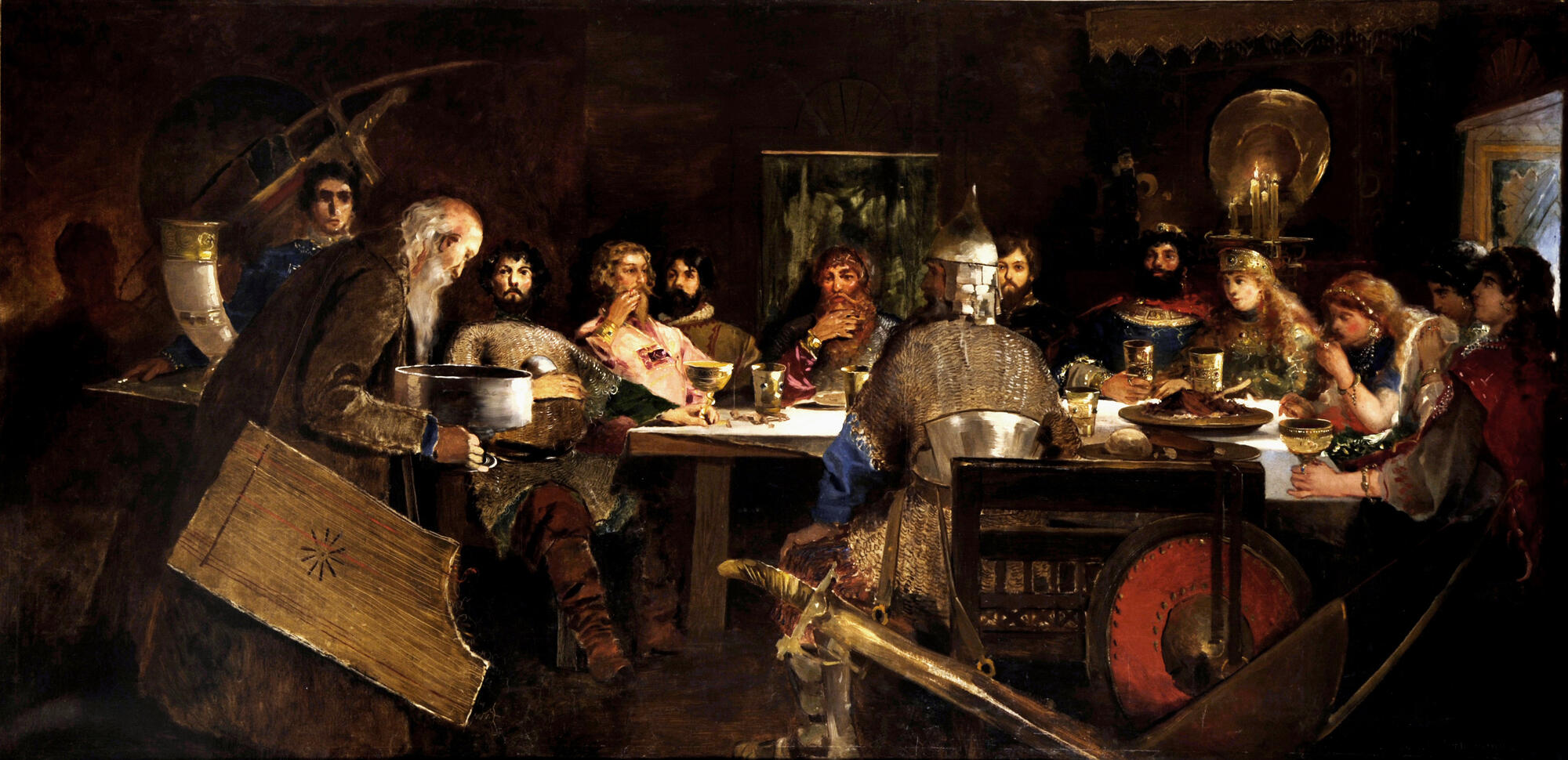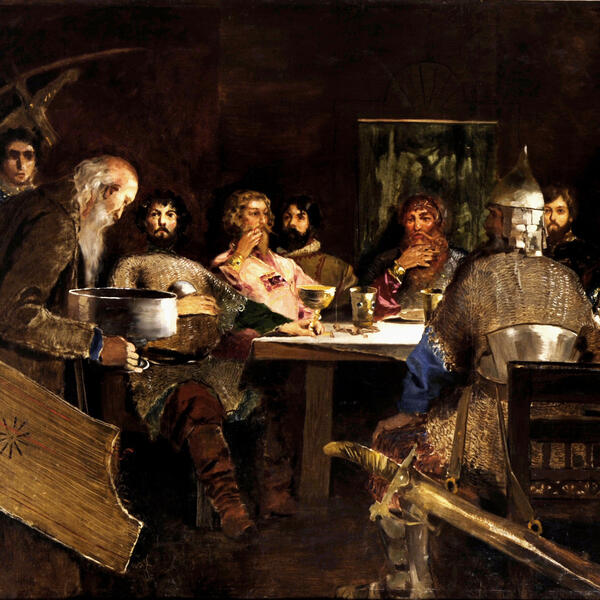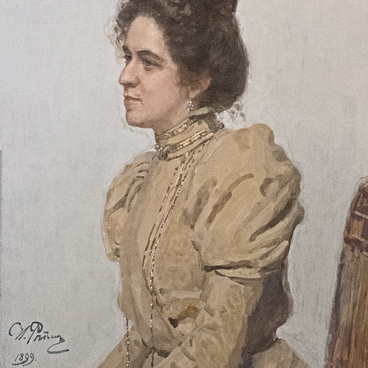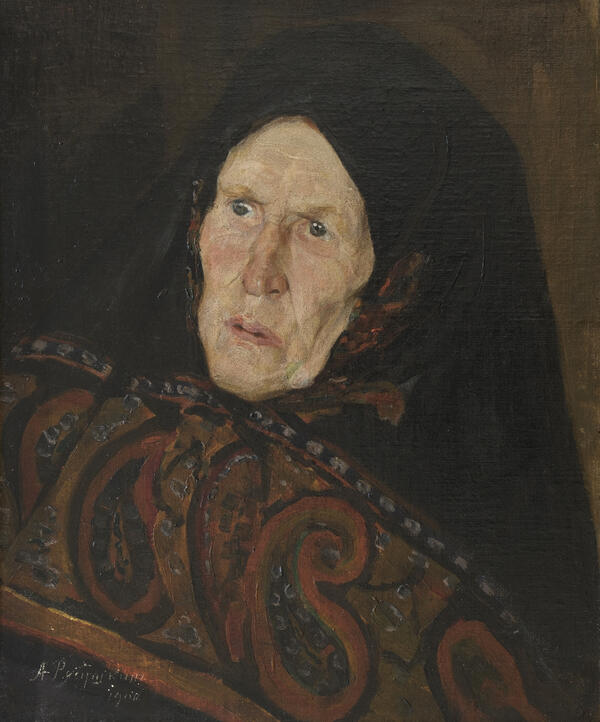Andrei Ryabushkin was born into a family of peasant icon painters in the Tambov governorate. As a child, he often helped his father and brother at work, and at the age of 14 he became an orphan. At this time, Andrei Preobrazhensky, a student of the Moscow School of Painting, Sculpture and Architecture and Ryabushkin’s fellow countryman, was visiting the province. He noticed Ryabushkin’s talent and invited him to Moscow, where he helped the aspiring artist get a job at the School. In 1882, Ryabushkin, without completing the course, left for St. Petersburg and entered the Academy of Arts.
Due to his academic success, Ryabushkin got the opportunity to go abroad at the expense of the Academy in order to continue his education. However, the artist spent the scholarship on a trip to ancient Russian cities. He admired the architecture and art of Ancient Rus. In addition to architecture, he also studied ancient fabrics, household items, costumes and weapons.
Ryabushkin was not the only one who was interested in the history and culture of Ancient Rus: this topic was popular among the Russian intelligentsia at the end of the 19th century. The paintings of those years were greatly influenced by epic poems and fairy tales, which were published in print media. The artists sought to portray the appearance of epic heroes in their paintings.
Ryabushkin did not feel much fascination for large-scale historical events. The artist was more interested in the everyday life of past: everyday routines, costumes, traditions. In his works, Ryabushkin did not seek to retell the events of the past — his main goal was to convey the atmosphere of bygone times.
Ryabushkin painted ‘Feast of the Bogatyrs’ for the dining room of his friend Ilya Tyumenev — an artist, writer and public figure. Admirers of antiquity often gathered at his estate in the Novgorod governorate. This canvas became Ryabushkin’s first large work on the theme of Ancient Rus.
In the picture Prince Vladimir Krasnoe Solnyshko, who is dressed in a red cloak, sits at the head of the table. This epic poem was based on the historical Prince Vladimir Svyatoslavich who initiated the Christianization of Kievan Rus.
The space of the prince’s room is illuminated by the warm, dim candlelight. The faces and figures of the participants of the feast appear as contrasting spots from the dark. On the right hand of the prince we can see the heroes and warriors, on the left — women in colorful outfits. The white tablecloth — the brightest spot of the composition — is reflected in gold cups, women’s jewelry and men’s chain mail.
All the guests look at the elder man on the left side of the composition — the storyteller. In olden days, storytellers sang at feasts to the accompaniment of ‘gusli’ (a multi-string instrument) telling ‘bylinas’ — oral epic poems about the glorious deeds of the heroes. In his hands, the old man holds a huge bowl — an offering from the guests as a sign of respect.
Due to his academic success, Ryabushkin got the opportunity to go abroad at the expense of the Academy in order to continue his education. However, the artist spent the scholarship on a trip to ancient Russian cities. He admired the architecture and art of Ancient Rus. In addition to architecture, he also studied ancient fabrics, household items, costumes and weapons.
Ryabushkin was not the only one who was interested in the history and culture of Ancient Rus: this topic was popular among the Russian intelligentsia at the end of the 19th century. The paintings of those years were greatly influenced by epic poems and fairy tales, which were published in print media. The artists sought to portray the appearance of epic heroes in their paintings.
Ryabushkin did not feel much fascination for large-scale historical events. The artist was more interested in the everyday life of past: everyday routines, costumes, traditions. In his works, Ryabushkin did not seek to retell the events of the past — his main goal was to convey the atmosphere of bygone times.
Ryabushkin painted ‘Feast of the Bogatyrs’ for the dining room of his friend Ilya Tyumenev — an artist, writer and public figure. Admirers of antiquity often gathered at his estate in the Novgorod governorate. This canvas became Ryabushkin’s first large work on the theme of Ancient Rus.
In the picture Prince Vladimir Krasnoe Solnyshko, who is dressed in a red cloak, sits at the head of the table. This epic poem was based on the historical Prince Vladimir Svyatoslavich who initiated the Christianization of Kievan Rus.
The space of the prince’s room is illuminated by the warm, dim candlelight. The faces and figures of the participants of the feast appear as contrasting spots from the dark. On the right hand of the prince we can see the heroes and warriors, on the left — women in colorful outfits. The white tablecloth — the brightest spot of the composition — is reflected in gold cups, women’s jewelry and men’s chain mail.
All the guests look at the elder man on the left side of the composition — the storyteller. In olden days, storytellers sang at feasts to the accompaniment of ‘gusli’ (a multi-string instrument) telling ‘bylinas’ — oral epic poems about the glorious deeds of the heroes. In his hands, the old man holds a huge bowl — an offering from the guests as a sign of respect.







